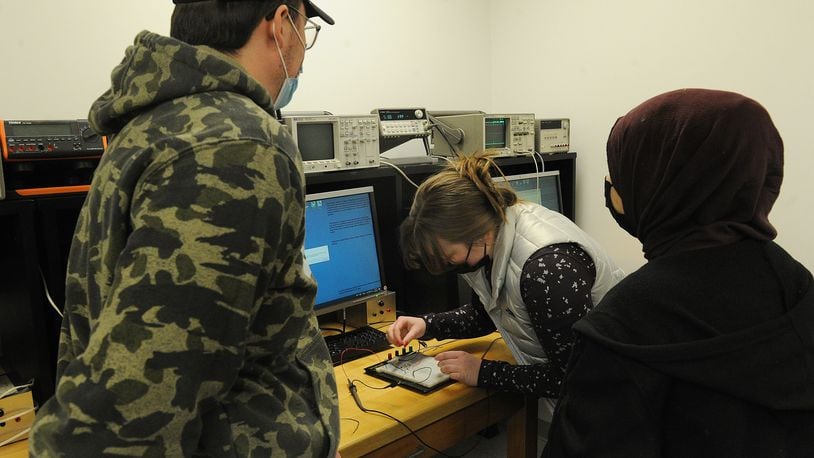Kevin Willardsen, an economics professor at Wright State University, said he expects universities to particularly benefit from the new company, as more trained and skilled jobs will be open and more skilled technology workers will be needed.
“It certainly should do wonders for the computer science department at Wright State and University of Dayton,” Willardsen said.
The Inter-University Council of Ohio, which represents Ohio’s public universities, said in a news release that Intel plans to invest in partnerships over the next decade with Ohio’s universities, community colleges and the U.S. National Science Foundation to drive research and create semiconductor-specific curricula for two-year and four-year programs.
“Ohio’s public universities stand ready to support the talent requirements of a world class company in Intel, its supply chain requirement and an entire industry,” said IUC president & CEO Bruce Johnson.
The ICU said with the new Intel plant, semiconductors will become a major Ohio export, helping add $2.8 billion annually to Ohio’s gross state product. Intel’s initial investment will generate thousands of jobs requiring skilled workers, including 3,000 Intel jobs paying an average of $135,000 per year, plus benefits.
There will be a variety of jobs available from the Intel project from electrical engineers to manufacturing technicians to construction workers, and additional workers needed to support the manufacturing hub.
Wright State said it is too early to predict if the university would see more demand for programing, but the university expects Intel to be interested in graduates from Wright State computer science, engineering and business programs.
“As a regional public institution, we try to be responsive to the opportunities for our region, and we look forward to meeting them,” interim provost Oliver Evans said.
Jason Eckert, executive director of career services at the University of Dayton, said Intel’s investment is a great opportunity for UD graduates.
“The university is well positioned to help Intel meet its workforce needs, including internships and cooperative education,” he said.
Edison State Community College, Clark State College and Sinclair Community College said conversations with the Ohio Association of Community Colleges this week would help further develop their already available programs. Once those conversations happen, the colleges will have a better sense of what programs they may need to add, they said.
Bruce McKenzie, a spokesman for Edison State, said several degree programs already support structures that Intel will likely need, like electronic engineering technology, advanced manufacturing, automation and robotics, operations technology, general business studies, information technology, cybersecurity and networking. Clark State and Sinclair listed similar programming available already.
Tiffany Hunter, provost and vice president of academic affairs at Clark State, said Intel coming to Ohio is expected to have a positive impact on job growth.
“This opportunity will provide many of the residents in the surrounding areas with jobs that will provide strong economic growth for our communities in Ohio and the Dayton region more specifically,” Hunter said.
Sinclair spokeswoman Cathy Petersen said the college is still in early talks with the state to determine what the college needed to meet Intel’s needs. But the college is prepared to help with job growth wherever it is needed, she said.
“We continue to align our programs and courses with the needs of the community and businesses in the Dayton region and beyond,” Petersen said.
About the Author
